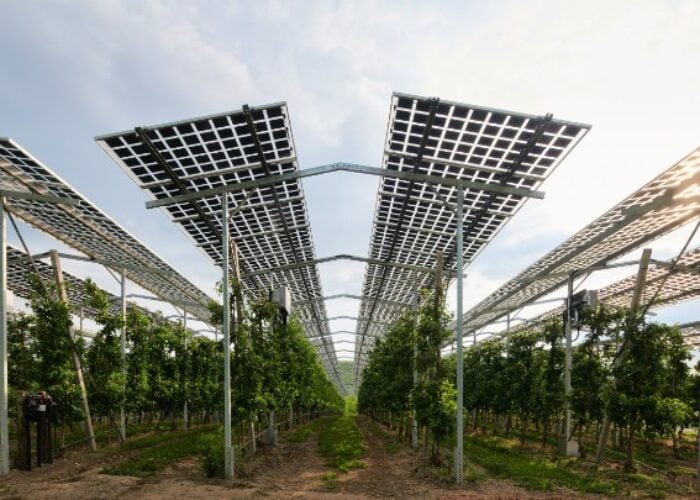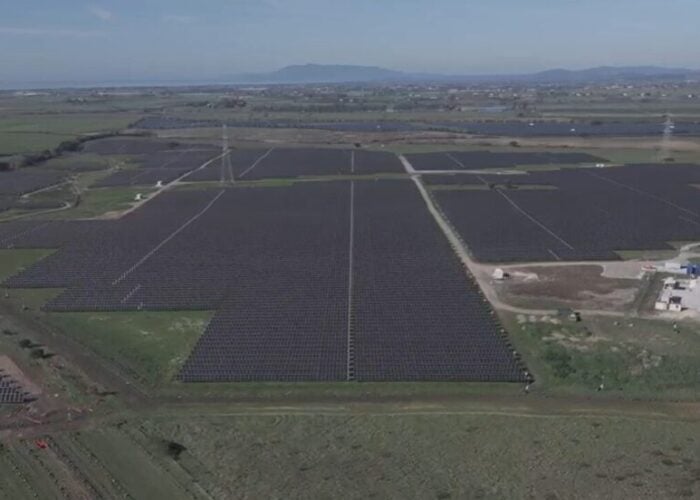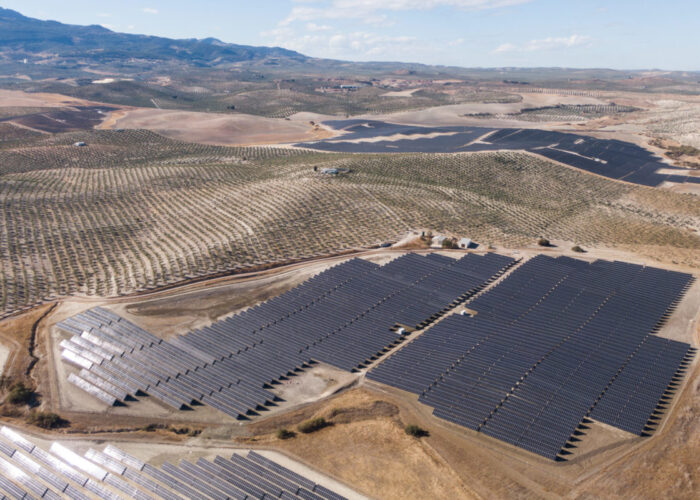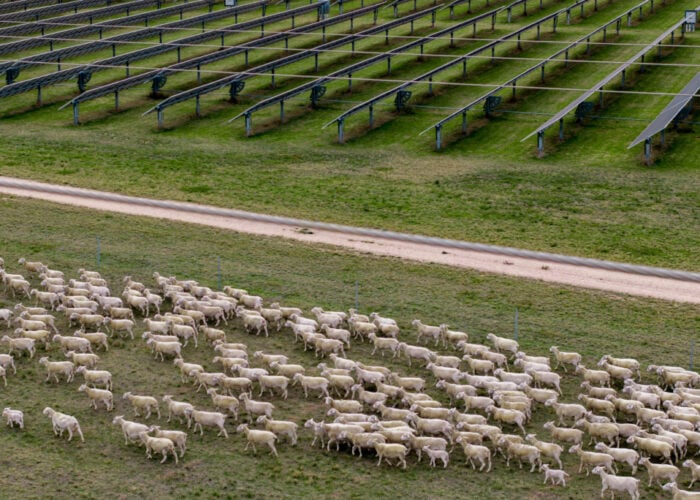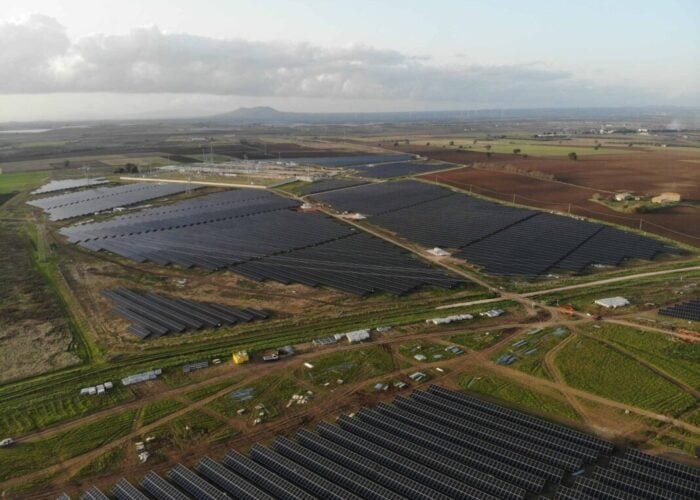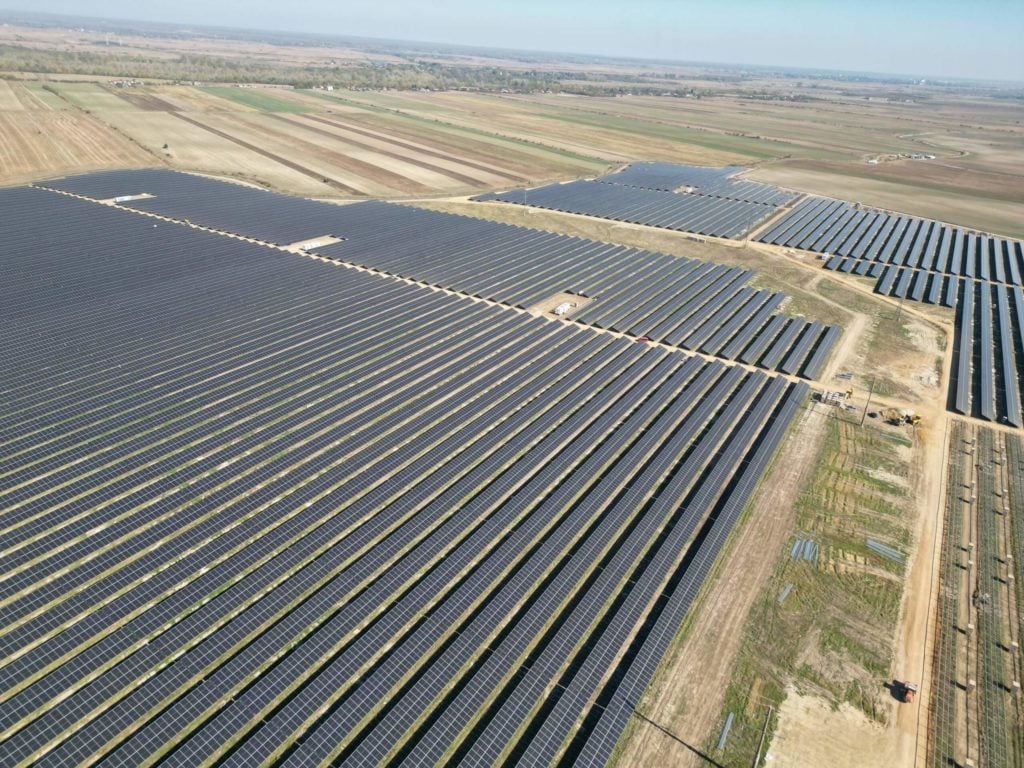
With grid availability, plenty of land and a new contracts for difference scheme that is set to go live this year, Romania is proving an increasingly attractive market for solar developers. Lena Dias Martins finds out more.
Romania is becoming an increasingly prominent entity in the EU solar market, as the country ramps up its efforts to attain its government’s goal of developing 7GW of renewable capacity – 3.7GW of which will be solar – by 2030.
Unlock unlimited access for 12 whole months of distinctive global analysis
Photovoltaics International is now included.
- Regular insight and analysis of the industry’s biggest developments
- In-depth interviews with the industry’s leading figures
- Unlimited digital access to the PV Tech Power journal catalogue
- Unlimited digital access to the Photovoltaics International journal catalogue
- Access to more than 1,000 technical papers
- Discounts on Solar Media’s portfolio of events, in-person and virtual
According to International Renewable Energy Agency’s Renewable Energy Statistics 2022, Romania’s total renewable energy capacity at the close of 2021 was 11,138MW – 1,398MW of which was solar.
Having successfully met its previous target of 24% of the country’s energy consumption being provided by renewables in 2020, the National Integrated Plan for Energy and Climate Change 2021–2030 reported that reaching 7GW of renewable capacity would mean raising this figure to 30.7%.
Market research company, Mordor Intelligence, predicted that achieving this target will see the Romanian solar market register a compound annual growth rate of over 9% between 2022 and 2027.
Romania has accelerated its transition away from carbon and its receptiveness to renewables, alongside geographical benefits, have drawn a number of solar developers to the country.
Evaluating the benefits of developing solar in Romania, Simonas Sileikis, head of solar business at Green Genius – which has a 10MW portfolio at late development stages in Romania – tells PV Tech Power: “The size of the country and size of the market are really attractive. The market in Romania is not so crowded as it is right now in Spain or Italy. So we do see this as good timing for development in this country.”
“Then, the stability of the country itself. It’s a European Union country and we see it being secure and stable. From this perspective, it’s a functioning market and the availability of resources such as the land and the grid capacity, which we also see still available in the country, means that we are absolutely focusing right now on development in Romania.”
The attractive prospect Romania presents for solar development is becoming increasingly conspicuous to developers, however, as the utility-scale PV market grows, challenges begin to emerge which could threaten to impede the development of solar.
The Romanian government has maintained strong support for the growth of its renewable industry, as demonstrated by emerging policies to incentivise the growth of solar. One example is the reintroduction of power purchase agreements (PPAs) following their ban from Energy Law no. 123/2012.
The ban was initially eased in 2020 when new renewable generators were allowed to apply for PPAs, before being completely lifted in 2022.
Power purchase agreements
A PPA is a long-term electricity supply agreement between a power producer and electricity trader or consumer. The bilateral agreement allows both parties to negotiate the long-term price of energy, which offers developers some revenue security.
Despite its intentions, the maturity of the PPA market may not yet be on target.
In conversation with PV Tech Power, Eyal Podhorzer, CEO at Econergy, which has eight solar projects in Romania at varying development stages, says: “The price that we’d be able to secure for a PPA is very much discounted from what the market consultants [for Econergy’s Romania projects] believe the price could be in the next 10 years.”
This, Podhorzer believes, is the main obstacle for investors in the Romania solar market, stating that: “At the moment Romania is a market only for investors who are willing to take the merchant risk.”
Discussing what could inhibit the growth of Romania’s solar market, Panos Kefalas, senior associate for South Eastern European markets at consultancy Aurora Energy Research, says: “We often hear that it’s still hard to get financing for a PPA-based project from a Romanian bank, they are not as comfortable doing this as they are in other markets. This makes it hard to find bankable PPA offtakers.”
These financial teething points led renewable energy provider, Rezolv Energy, to look outside of Romania for its route to market.
Discussing the ongoing planning process for Rezolv’s 1,044MW PV project in Romania (which the company claims will be the largest solar farm in Europe once online) Shane Woodroffe, CFO at Rezolv Energy, tells PV Tech Power: “The problem that we have with countries like Romania is finding credit-worthy offtakers that our lenders will accept.”
“We’re having to look extensively outside Romania for high-credit-quality corporate PPAs that will support the financing and which are acceptable to us and our lenders.”
Although PPAs may not have overtaken the merchant market as the predominant route to market for solar in Romania, the Romanian government is working to offer alternatives for renewable developers.
Podhorzer adds: “The Romanian government is very supportive in terms of facilitating the process in order to allow for the quicker realisation of solar projects.”
Contracts for difference
Another example of the Romanian governmental support for solar – and perhaps the policy gaining the most industry interest – is the implementation of a new contracts for difference (CfD) scheme, which is set to go live this year.
A CfD is a private law contract awarded through a private auction, which allows renewable generators to bid for a guaranteed revenue scheme for the duration of the contract. Once the contract is agreed, the counterparty will pay the difference between the agreed fixed strike price and a generator’s revenue. By offering investment security CfDs are used to encourage investments in renewables.
The scheme is being carried out with the support of the European Bank for Reconstruction and Development (EBRD).
Senior banker at the EBRD, Ahmad El Mokadem, explains that as well as providing funding, the bank appointed a legal firm with experience creating CfDs to help the Romanian government through the design and structuring process.
El Mokadem confirms that Romania’s CfD scheme will be similar to a traditional CfD, with some alterations to tailor it to the Romanian market.
In November 2022, the CfD was presented at a market funding event in Bucharest where El Mokadem notes there was “huge interest” in the scheme.
The additional route to market means that Romania will have a similar development process to Poland, however the youth of the market makes it less saturated than its Polish counterpart, which can speed up the development process for renewables – a highly attractive prospect for investors.
PV developers in Romania agree that the CfD scheme will have a positive impact on the growth of the Romanian solar market.
“The problem that we have with
countries like Romania is finding
credit-worthy offtakers that our
lenders will accept”
“It will attract more investors,” says Podhorzer, “because I think the main barrier to entry at the moment for major investors is the fact that they need to go to the merchant market.”
As the PPA prices are still relatively low, Podhorzer believes that implementing a government-backed CfD scheme will attract much bigger investors.
Commenting on the forecasted benefits of the CfD scheme in Romania, Jörg Menyesch, managing partner at developer CCE Holding – which currently has project rights in Romania totalling 680MW – says: “If it provides us with higher stability in our business plans, then it’s a good thing.”
Looking ahead to the CfDs implementation, El Mokadem explains that, although not yet finalised, its key parameters are in place and expectations are for the scheme to go live in the second half of this year. Once implemented, El Mokadem expects the scheme to be a “very powerful and relevant” tool for developers to enter the Romanian solar market.
Agriculture versus energy
Agriculture contributes a higher share of GDP in Romania than in any other country in the EU, according to the Global Economy’s data from 2021. Therefore, concern from the Ministry of Agriculture and Rural Development over how much land is used to accommodate solar farms can significantly impact the development of Romania’s solar industry.
Policy will be a key driver in addressing the food production versus energy security debate.
The Romanian government recently passed a new law to simplify the application process for renewable energy projects built on less than 50 hectares of agricultural land by removing the need for a Zonal Urban Plan (PUZ).
A PUZ ensures that a project’s development plan correlates with the provisions of its area’s General Urban Plan. The PUZ can only be initiated if an urban planning certificate has already been obtained. Removing this requirement ought to significantly speed up a project’s development.
According to the World Bank’s 2021 collection of development indicators, 59.1% of Romania’s land is agricultural. The sheer size of agricultural land means that Romania could become an an exporter of food as well as power – offering a welcome compromise between energy and agriculture.
Johannes Srajer, managing director for CCE Romania, a business arm of CCE Holding, states: “I think that the combination of producing energy and producing agriculture products in this agrivoltaic field can make a real benefit. The land could potentially be used more productively than before, because farmers could not only produce food, but also energy.”
Addressing the mounting pressures on all farmers due to climate change, Srajer’s colleague Menyesch notes that the combination of agriculture and PV could be “part of a solution for farmers to be more profitable, more resilient against tougher times”. He adds: “We don’t see photovoltaics as a threat for agriculture, the opposite is the case.”
Similar considerations are expressed by Woodroffe: “There are certain activities we can consider using the land [of a PV project] for because we don’t use all the land for the PV infrastructure. And there is an optimum design of the land where you can potentially get vehicles down between the rows and panels and still use it for certain agricultural activities where the land is not needed for PV.”
Econergy’s Podhorzer suggests another potential solution: “In my opinion the compromise that Romania will find – which you see in every other market including the UK – is that the agricultural land is graded into different types.”
In the UK the development process for solar built on agricultural land of classifications 3b, 4, and 5 is significantly shorter as it avoids the use of the most versatile cropland.
Despite the ongoing debate around agriculture and energy security in Romania, the industry appears optimistic that a compromise will be found.
Grid capacity
Grid connection is one of the most significant – and often more problematic – aspects of building a PV project. On this front, Romania offers a number of benefits in both grid capacity and connectivity.
Romania’s integrated transmission grid is connected to all five of its neighbouring countries. This integrated system is a much more attractive prospect than an isolated market.
An additional benefit to Romania’s relatively new market is its grid availability, especially in comparison to similar markets, such as Poland, that are struggling with capacity.
“The Romanian grid is not as congested as its neighbouring countries,” says Kefalas.
“Sometimes grid connection can be a limitation but that doesn’t seem to be the case yet in Romania. And that’s because Romania’s grid was oversized in the past, it had a larger size and demand than it has now, so there is some more space to start with.
“Maybe this will be a problem in five years or so. But for the time being, it seems that it is easier for generators to connect to the Romanian grid.”
Kefalas alludes to a consideration that is currently looming over Romania – as the Romanian solar market grows, so will the need for both grid availability and flexibility.
Grid capacity was a prominent consideration for the Romanian solar panel at the Solar Finance and Investment (SFIE) 2023 event, hosted by PV Tech Power publisher Solar Media in February.
Anastasios Christakis, managing director at Claritas Investments and one of the Romania panellists at SFIE, said: “My personal view is that if all these projects that are being developed at the moment in Romania come to fruition, Romania in three or four years’ time will be where western Europe is in terms of grid constraints. So Romania will have to think how they can alleviate this problem.”
Grid constraints are widely recognised as having a huge impact on the wider renewable transition.
El Mokadem, for example, calls grid capacity “the most important constraint that is not only facing Romania, but facing every country trying to deploy renewables”.
Woodroffe makes the same observation, stating that he believes grid connectivity to be “a European-wide problem and probably worldwide”. He adds: “It’s one of the biggest challenges for renewable energy and, indeed, PV. So the issue is, you’ve got grid infrastructure that was originally designed around very large centralised generating units. And now we’re moving to a very decentralised system, renewables projects spread all around the place.
“You need to take all this new electricity generation and to move it to where it’s consumed. So I do see it as one of the biggest challenges for Europe: adapting, strengthening, building new lines, reinforcing the whole grid network.”
Developers in Romania appear widely in agreement that the Romanian government, as well as the country’s transmission system operators (TSOs), are both cooperative and proactive in their approach to grid connectivity.
Another member of the SFIE Romania panel, Jim Campion, CEO at Rezolv, said: “Interactions are fairly open. I think that Romania has improved massively since the first wave, so that’s definitely a positive.”
Referring to one of Romania’s largest TSOs, Menyesch says: “We see that Transelectrica, for example, is making an effort to increase the quality of the grid.
“Though it may not be very fast, there are real efforts to do so and we can see that Romania is really willing to move to a liberal energy market.”
El Mokadem reports the same willingness from TSOs in Romania, agreeing that, in terms of grid upgrades, “transmission system operators are setting the right plans and allocating the right budget”. Funding for these upgrades has already been received from the Modernisation Fund – an EU programme to support 10 member states modernise their energy systems.
During the fund’s second year of operations, Romania received €1.39 billion (US$1.48 billion), which will support the modernisation of its energy networks and contribute to grid upgrades.
This investment will help to both increase and upgrade Romania’s grid, which, according to Transelectrica, has a current total cross-border capacity of 34GW; thus, facilitating the continued growth of the Romanian solar market.
Romania’s solar market has developed significantly since 2020 and with the CfD scheme estimated to go live later this year it is set to continue its upward trajectory. Consequently, many developers are beginning to consider Romania as a pillar market.
As it grows, Romania’s energy market will need to remain reactive and flexible. For example, with increased energy produced by renewables, energy storage will be key to avoiding cannibalisation. Panos warns that as of yet there is still “no framework for energy storage at all” in Romania.
However, the Romanian government’s proactive support of the solar market so far presents a positive outlook for the future of solar in Romania.
“This is a year that is very important for solar in Romania. We see a lot of appetite for solar and a lot of people moving ahead with projects,” says El Mokadem.
“So it is really important that this continues, and we are involved heavily with a number of projects in different approval stages and I hope, before the end of this year, we’ll be able to announce a number of audits that we signed in Romania to help with the deployment of more solar.”
PV Tech publisher Solar Media is extending its Large Scale Solar conference series to Southern Europe with the first edition in Athens, Greece during 4-5 July. The event will focus on an ever-growing market such as Southern Europe with a packed programme of panels, presentations and fireside chats from industry leaders responsible for the build-out of solar PV projects in Greece, Romania and Croatia. More information, including how to attend, can be read here.

